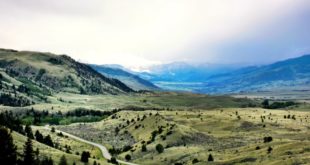The lynx is an infrequent visitor to Yellowstone National Park: in recent years there have been two reports of a lynx in the northern part of the Park, both in 1997; records going back before the turn of the century indicate 57 records of lynx sightings on file in Yellowstone between 1883 and 1995. There’s no evidence that lynx ever permanently lived in Yellowstone.
This isn’t necessarily surprising: lynx are known for their transitory and elusive ways. Seeing one in Yellowstone would be quite the accomplishment.
Or seeing one anywhere, for that matter; the lynx has been an endangered species for a decade now as various environmental groups and the U.S. Fish and Wildlife Service have been sparring over the terms of protection and how many acres should be protected as critical habitat to allow the lynx population to grow. The Bush Administration worked to keep the territory as minimal as possible: just 1,841 square miles at one point. A second recommendation upped that to 39,000 square miles in Maine, Minnesota, Montana, Wyoming, Idaho and Washington.
Malloy threw that out after the the Alliance for the Wild Rockies and three other conservation groups argued the FSW was omitting territories where lynx were known to roam and breed, upping the total and adding acreage in southwest Montana, and north and central Idaho. In particular, Malloy told the FWS to go back and add areas like Gallatin National Forest, adjoining Yellowstone, as one of the critical habitat areas. These areas, he ruled, should create corridors that give the lynx the ability to roam freely; they just can’t be pockets carved out of larger areas. The areas listed by Malloy would double the critical habitat for lynx.
Now, expanding the critical habitat for lynx won’t necessarily mean they will live in Yellowstone. And even if they return, lynx are notoriously reclusive, preferring to hang on in the deep forests far away from open space. (So don’t expect them to be sauntering alongside the Grand Loop Road in your lifetime.) Still, Malloy’s ruling does give them a potential boost — and anything adding to the diversity of Yellowstone National Park is a good thing.
We’ve also set up a free Twitter account so you can receive updates on the device of your choice.
 Yellowstone Insider Your Complete Guide to America's First National Park
Yellowstone Insider Your Complete Guide to America's First National Park





